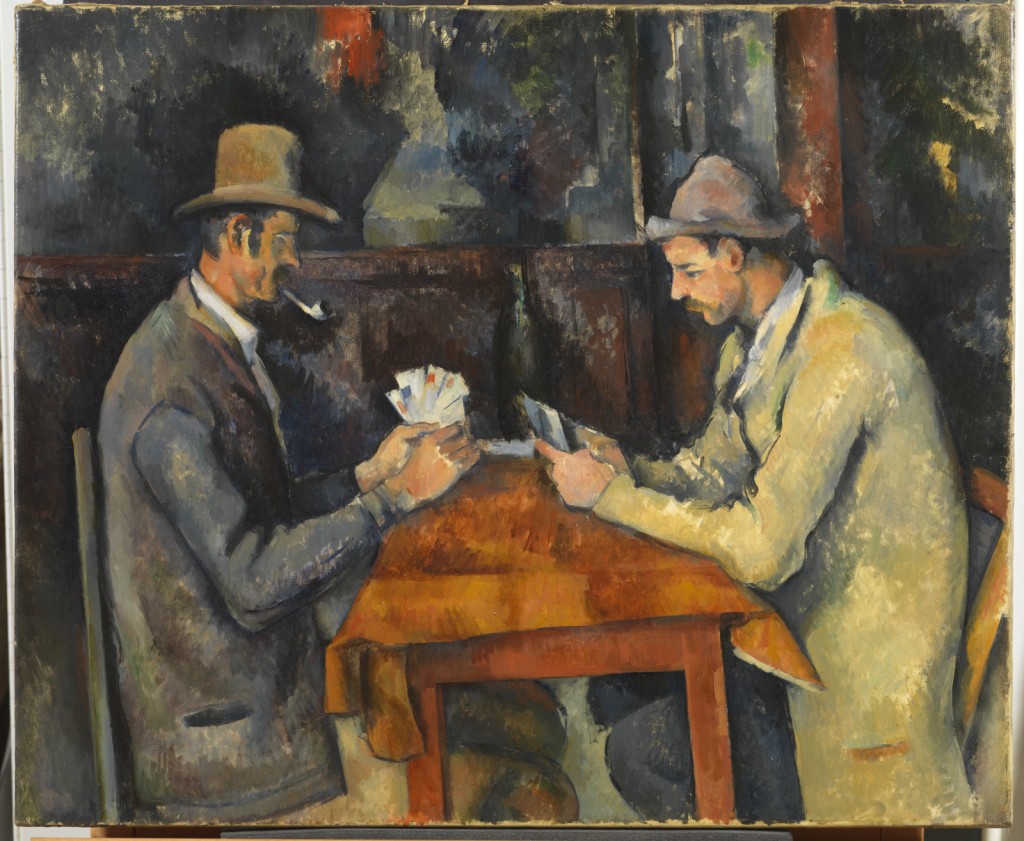No painter could better serve as a representative of the endless variety and experimentation of twentieth-century painting than the versatile and immensely productive Pablo Picasso (1881-1973).
A native Spaniard and adopted Frenchman, Picasso painted in many styles and periods. For example, the paintings of his “blue period” in the early 1900s, with their exhausted and defeated people, had a melancholy, lyrical quality that reflected the
struggling young artist’s own poverty. These pictures are said to have been influenced by the work of El Greco, the sixteenth-century Spanish master; certainly both artists conveyed a sense of concentrated emotion by exaggerating and distorting human proportions.
Around 1905-1906 Picasso turned to more daring innovations, much influenced by exhibitions of masks from black Africa and of large-eyed archaic sculptures newly discovered in the Mediterranean world. Picasso strove to capture in the two dimensions of a picture the three dimensions of the real world. Sometimes he used the
techniques of abstractionism—the reduction of figures to a kind of plane geometry, all angles and lines; sometimes those of cubism—a kind of solid geometry, all cubes, spheres, and cones; and sometimes collage (paste-up), in which he glued onto a picture fragments of real objects.
Picasso often returned to more traditional representational painting, as in the almost classical portraits of his “white period” after World War I. Yet he also persisted in his more radical vein of showing the human or animal figure from two or more angles simultaneously; hence the misplaced eyes and other anatomical rearrangements that he employed with such telling effect in Guernica (1937), which depicted the havoc wrought by an aerial attack upon a defenseless town during the Spanish Civil War. At his death Picasso was the most widely known artist in the world.
Art, like life, remained idiosyncratic, diverse, unwilling to be regimented. Some viewers denounced such art as decadent; this was Hitler’s position. Others wished art to contribute in a direct way to the state; this was Stalin’s position. Many found art simply irrelevant. The more it moved away from representing objective and visual reality, the less they could understand it. But many were fascinated by the new freedom, the new themes, and the new techniques. In varying ways this art sought to capture the courage and the anguish of modern humanity.
From early in the century, art had proven to be explosive, expressive, highly innovative, breaking away from the settled canons of earlier representational art. The expressionists declared that they must represent things not as they saw them but as they felt them, and such art took on a magical, poetic, even visionary quality.
The fauves, artists who used pure color, and among whom Henri Matisse (1869-1954) was a central figure, worked with bold, flexible lines to convey an intensity of expression that went beyond the normal range of human emotions. Surrealism was linked to Freudianism, for it sought to express subconscious mental processes. The giant Picasso was the transition figure; Salvador Dali (1904-1989) and Yves Tanguy (1900-1955) enjoyed large financial success, in part because of the popularity of surrealist techniques.
For a brief time after World War I a protest movement in art known as Dada scandalized critics. This group protested the slaughter of millions in war, not only through their work but in their chosen name, for Dada sounded like a non-word representing the verbal nonsense that the artists felt the makers of war used in order to destroy sanity and security.
Although it has been argued that Dadaist protest was more political and social than aesthetic, most of the artists associated with it made distinguished contributions to the arts. Jean Arp (1887-1966), who fled his native Alsace for Switzerland to avoid service in the German army, was a pioneer in abstractionist painting and sculpture.
George Grosz (1893-1959) made bitter sketches satirizing the foibles of German society between the two world wars. Marcel Duchamp (1887— 1968) created a sensation at the New York Armory show of 1913, which introduced avant-garde art to the American public, by exhibiting his Nude Descending a Staircase, a cubist attempt to depict the human figure in a rapid motion.
Artists like Duchamp and Grosz eventually moved from Europe to the United States as part of the wave of artistic emigration that reached its peak in the late 1930s and early 1940s and ended the old dominance of Paris as the center of the avant-garde. In the 1940s and 1950s New York became the capital of abstract expressionism, which communicated ideas or moods by entirely nonrepresentational means through color, form, and a sense of movement or action.
The American Jackson Pollock (1912-1956) dripped or hurled automobile enamel on huge canvases, which he laid out on his studio floor, creating an arresting effect of ordered chaos. In the 1960s the New York spotlight shifted to pop art, a neo-Dadaist reaction to mass-produced and mass-marketed commodities.
Pop artists depicted boxes of Brillo, cans of Campbell’s soup, road signs, soap operas, comic strips, and blurred pictures of movie stars from magazines or the television screen. Pop artists like Andy Warhol (1928-1987), together with the Americans Robert Motherwell (1915-1991) and Georgia O’Keeffe (1887-1986) and the British Francis Bacon (1909-1986), took up dominating positions.

